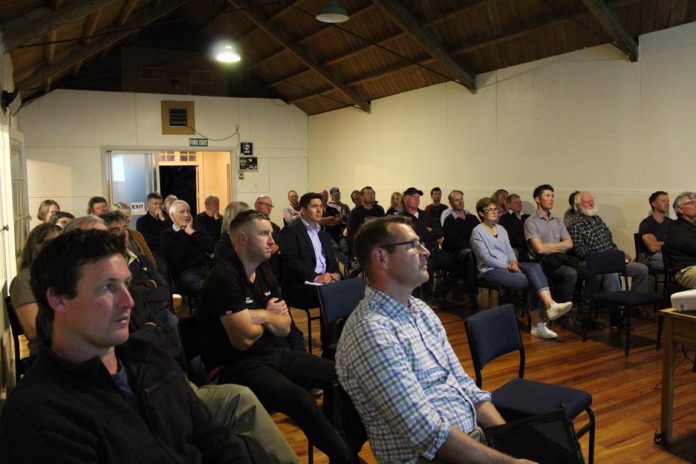
More than 40 people gathered recently to learn about the Foothills Catchment Group and the power of collective effort with water monitoring and native planting initiatives.
The event at the Staveley Hall was the first wider community meeting for the catchment group and featured guest speaker Dr Brett Painter.
Painter, a water systems scientist, advised the group how to correctly interpret their water data to assess the health of local waterways.
The good news is the catchment group’s water monitoring programme is showing the sampled streams to be in relatively good health.
However continuous data is needed over several years to establish long term trends, as well as an expansion of types of data (Macro Community Index) to get a true understanding of stream health and how this relates to Environment Canterbury’s Land and Water Regional Plan.
Increasing the group’s membership will enable this expansion while minimising the cost to the individual.
The Foothills Catchment Group’s 12 landowners have come up with a catchment action plan in two years of operation for how they want to achieve environmental stewardship across the foothills.
Chairperson David Acland said over time the catchment group aims to effect change on a larger scale beyond what any single landowner could do alone.
“The beauty is we are doing it ourselves and self determining our future by gathering data, sharing ideas and collaborating on projects that we might have previously done on our own.”
The group is now opening itself up to new members in the catchment – the area above the Rangitata Diversion Race between Mt Somers and the Rakaia Gorge.
While founding members come from large farms, owners of smaller block holdings and lifestyle properties are welcome as the group wants to be truly representative of the foothills community.
“We had to build foundations before we could get others on board. Now we have something to show with native plantings under way and results from our water sampling, we can get people excited about being part of the group,” Acland said.
For 15 months, the group has sampled six streams flowing out of the foothills.
With support from the Mid Canterbury Catchment Collective, quarterly testing will help build a picture of what’s happening in the Upper Plains, alongside data from individual landowners, Ashburton District Council and Ashburton Lyndhurst Irrigation’s own water monitoring programmes.
The group also has a biodiversity focus with more than 1000 native plants and trees planted alongside Staveley Stream earlier this year with help from Synlait’s Whakapua ¯wai initiative.
The group wants to plant out all suitable areas from the native bush where Staveley Stream starts to where it finishes at Bowyers Stream over the next 10 years.
– Anyone wanting to learn more about the Foothills Catchment Group or get involved can contact the group’s facilitator Chris Gibbs on 021 317 669 or email at [email protected]



